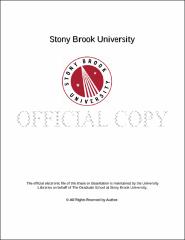| dcterms.abstract | As shown by McGrattan (2012), an anticipated increase in dividend taxes plays an important role in explaining the dramatic investment decline during the U.S. Great Depression. The first chapter of this dissertation attempts to test whether this conclusion is still robust when household heterogeneity and precautionary saving motives are taken into consideration. I build an Aiyagari model with dynamic firms, dividend taxes, and labor productivity shocks that accounts for the U.S. earnings and wealth inequality using 1930s data. The conclusion is that the impact of anticipated increases of dividend taxes on the investment is very sensitive to the presence of household heterogeneity and precautionary savings motives. The predicted investment in the heterogeneous agent model is 50% smaller than in the homogeneous agent model proposed by McGrattan (2012). The decline in output and working hours accordingly becomes much less significant. Because, although the anticipated hike in dividend taxes diminishes the expected return to the investment, it reduces the value of total assets that households hold for self-insurance against the highly persistent idiosyncratic shocks. In order to retain the desired asset level, households hesitate to reduce their saving motives even at a lower capital return rate, and therefore a lower aggregate investment decline is generated. The second chapter explores the role of working capital during the U.S. Great Depression. My hypothesis is that the scarcity of working capital contributed to the propagation of the financial distress to the real sector. When the financial crisis reduced the availability of short-term financing, an important source of working capital, firms experienced a squeeze in their disposable cash flow. As they could not adjust their financial structure promptly to ease the liquidity tension, firms were ultimately forced to cut labor inputs and production, generating a large contraction. My main quantitative experiment shows that this mechanism explains almost 50% of the working hours decline in the early 1930s, and it also predicts considerable declines in consumption and output. Moreover, when the financial meltdown is unexpected or when the average term to maturity of long-term debt is lengthened, the mechanism described above gets aggravated. Finally, when dividend taxes increase, I find that investment does not collapse, in contrast to literature. This finding implies that the impact of capital return decline, which is caused by an anticipated dividend tax increase, could be potentially offset by financing frictions. The final chapter studies the relationship between corporate bond default risk and economic downturn during the U.S. Great Depression, and propose that the default risk is an effective amplifier of adverse technology and financial shocks. On the one hand, the massive wave of corporate bond defaults directly idled a considerable amount of capital, which was detrimental to production, investment, and employment; On the other hand, the indebted firms were inclined to cut more investment when default risks are looming, as they were also concerned about losing ownership of firms and experiencing the costly default process. I build a rational expectation DSGE model with firm default option, which generates simulated investment dynamics that are much closer to the actual 1930s data series than in the standard RBC model. The model also predicts satisfactory declines in consumption, working hours and output. Moreover, I find that the default recovery rate decline caused by adverse financial shocks explains well the increasing corporate bond yield in the early 1930s. | |

